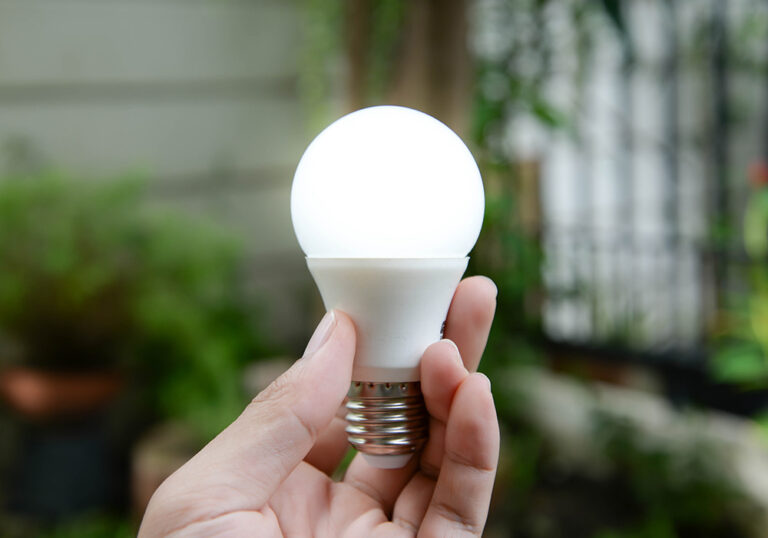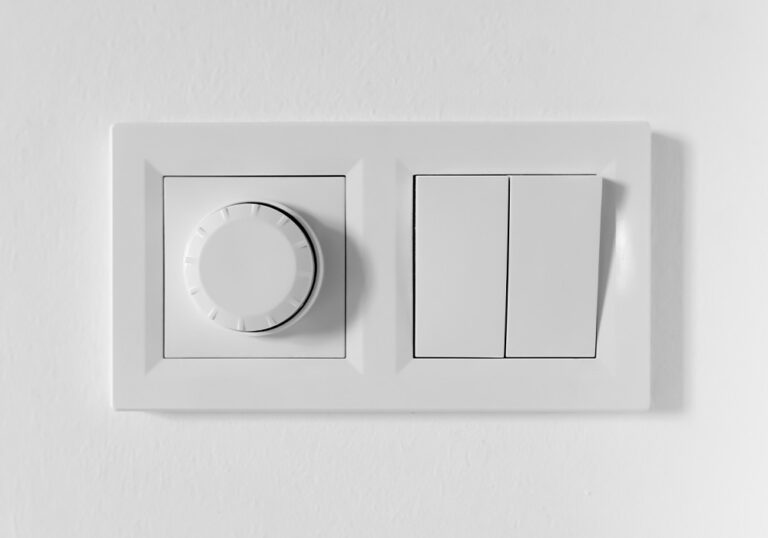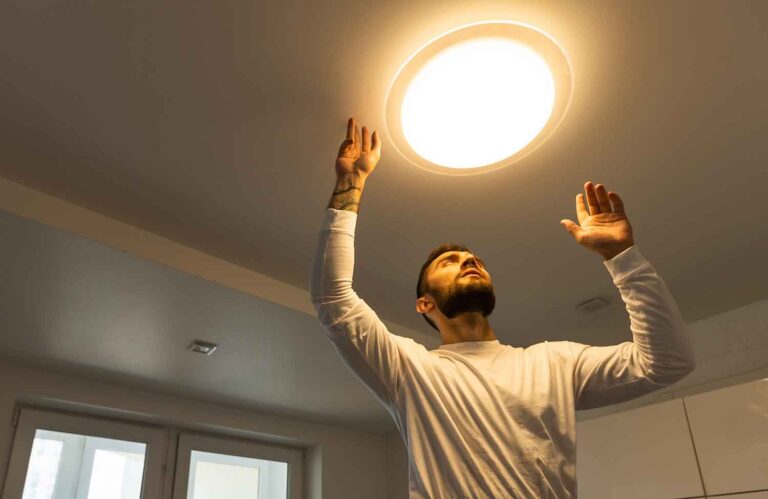Warm White vs. Soft White LED Lighting Guide
When it comes to choosing the right lighting for your home or office, you may find yourself faced with a common dilemma – should you go for warm white or soft white lighting? Both options have their unique characteristics, making them suitable for different settings and moods. As you begin to explore the world of lighting, it is essential to understand the distinctions between these two popular colour temperatures.
Warm white and soft white lighting each emit a slightly yellow hue, which is where most of their similarities end. The differences between them lie in their colour temperatures, measured in Kelvins (K). Warm white lights typically have a lower colour temperature, ranging from 2700K to 3000K, as opposed to soft white lights that usually fall within the 3000K to 3500K spectrum. These slight variations impact the overall atmosphere and environment, helping you create a space that is comfortable and inviting.
With numerous applications and benefits, both warm white and soft white lighting have their advantages. It is ultimately up to you to decide which option best suits your needs and preferences, taking into account factors such as colour temperature, atmosphere, and lighting purpose. Understanding the science behind lighting and the impact of colour temperatures will guide you in making the right choice for your space.
Key Takeaways
- Warm white and soft white are distinct in their colour temperatures and atmospheres they create
- Consider factors such as preference and lighting purpose when choosing between the two
- Understanding the impact of colour temperatures is essential for making an informed decision
Understanding Soft White and Warm White
When choosing lighting for your home, it is crucial to understand the differences between soft white and warm white lights. These two options can create different atmospheres and affect how your spaces feel.
Soft White lights have a colour temperature range of 2700K to 3000K. The light emitted has a subtle yellow hue, which creates a comfortable, warm and welcoming ambiance in your living space. Soft white lighting is typically used in spaces where relaxation is key, such as bedrooms and living rooms.
Warm White lighting, on the other hand, has a slightly lower colour temperature of 2400K to 2700K. The light produced has a more orange or amber hue, which gives your room a warmer and cosier effect. Warm white lighting is often used in areas where a more intimate atmosphere is desired, such as dining rooms and restaurants.

When choosing between these two options, consider the purpose of the lighting and the atmosphere you want the room to have. If you desire a relaxation space, opt for soft white lights. If you want a cosier atmosphere, choose warm white lights.
Remember that other factors can affect the lighting in your space, such as:
- The size and shape of the room.
- The colour and texture of the walls and furniture.
- The amount of natural light in the room.
Taking these factors into account will help you make an informed decision on whether soft white or warm white lighting is best for your needs. Experimenting with different lighting options is also a great way to find the perfect balance for your space.
The Impact of Colour Temperatures
Colour temperature plays a significant role in how the lighting of a room is perceived. It can create various moods and impact the comfort and functionality of a space. Understanding the difference between warm white and soft white lighting is vital in helping you make the right choice for your needs.
Warm white lighting typically has a colour temperature range of 2,700 to 3,000 Kelvin. This type of lighting creates a cosy, inviting atmosphere, making it ideal for living rooms, bedrooms, and dining areas. The yellowish hue emitted by warm white bulbs closely resembles the glow of natural candlelight or firelight, which promotes relaxation and boosts feelings of warmth.
On the other hand, soft white lighting falls within a colour temperature of 3,000 to 3,500 Kelvin. It appears slightly cooler than warm white but is still warmer than daylight bulbs. Soft white lighting is versatile and suitable for general, everyday use. Spaces like kitchens, bathrooms, and offices can benefit from this type of lighting as it maintains a level of warmth without appearing overly yellow.
Choosing the appropriate colour temperature can significantly impact the efficacy of a space. For example, selecting warm white for a home office might reduce productivity due to its relaxing nature, whereas utilising soft white in a bedroom may not create the desired ambience for restful sleep.
Remember that different colours and materials within a space can also affect how lighting appears. Light and dark surfaces, as well as the presence of various textures and patterns, can influence the overall look and feel of a room. When selecting between warm white and soft white lighting, consider how the surrounding décor will interact with the chosen colour temperature to achieve your desired result.
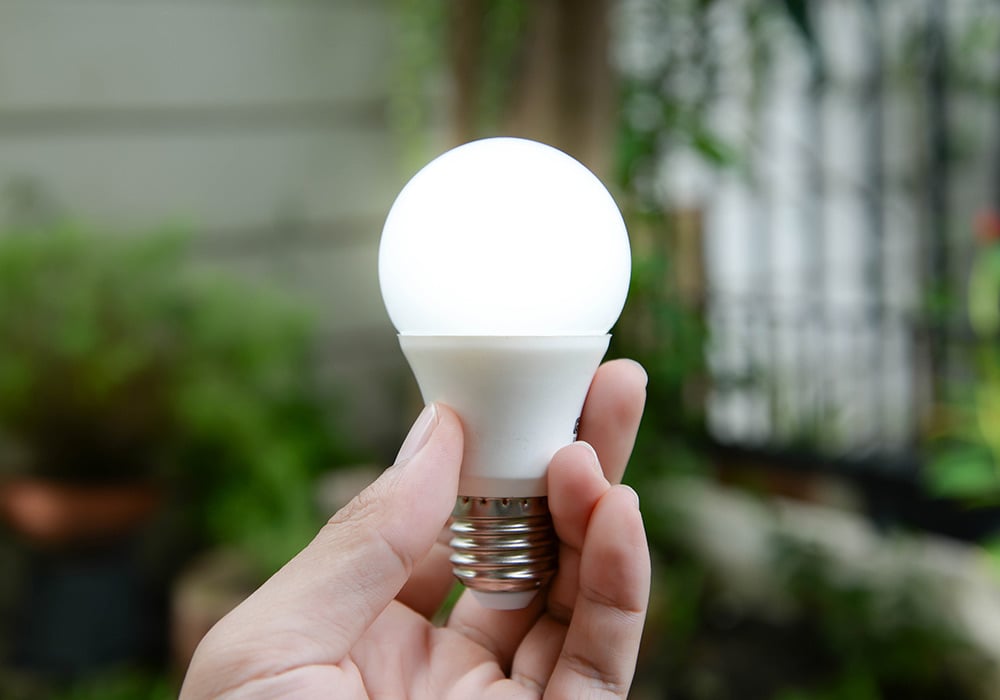
The Science Behind Lighting
When it comes to selecting the right lighting for your home, understanding the science behind it can help you make informed decisions. Lighting temperature is measured in Kelvin (K), and the colour emitted by a light bulb depends on its temperature.
Warm White and Soft White are two popular choices, each providing a different ambiance. Warm White typically ranges between 2700K and 3000K, producing a yellowish, warm light. This type of lighting is ideal for creating a cosy atmosphere in areas like living rooms or bedrooms.
On the other hand, Soft White lighting falls within the range of 3000K to 3500K. The light emitted is still warm, but with a hint of coolness. This type of lighting is suitable for both relaxation and concentration, making it perfect for study areas or office spaces.
When comparing the two, there are three main factors that can influence your choice:
- Purpose: Consider the function of the room you’re lighting. As mentioned earlier, Warm White is better suited for areas focused on relaxation, while Soft White works well in areas where both relaxation and concentration are needed.
- Colour Scheme: The colour temperature of your lighting can affect the appearance of colours in a room. Warm White tends to enhance warm colours, like reds and oranges, while Soft White better complements cool colours, like blues and greens.
- Personal Preference: Ultimately, your preference plays a significant role in choosing between Warm White and Soft White lighting. Every person perceives colour temperatures differently, so it’s essential to select what makes you feel most comfortable.
By keeping these factors in mind, you can ensure that your lighting selection is tailored to suit your specific needs and preferences, creating the perfect environment for your home.
Choosing Between Soft White and Warm White
When deciding between soft white and warm white lighting for your home or office, it’s crucial to understand their differences and where each type of light is best suited.
Soft white bulbs typically have a colour temperature range of 2700K to 3000K. These bulbs emit light with a warm, yellowish hue, providing a cosy and inviting atmosphere. Soft white lighting is an excellent choice for areas of relaxation, such as living rooms, bedrooms, and dining rooms.
Warm white bulbs, on the other hand, have a slightly higher colour temperature of 3000K to 3500K. The colour they emit is similar to a soft white bulb, but with a whiter and brighter appearance. This type of light works well in spaces where you need a bit more clarity for tasks, such as kitchens, bathrooms, and home offices.
In order to choose between the two, consider the following factors:
- Purpose of the room: Determine what activities will take place in the space and select the appropriate light temperature accordingly. For example, soft white lights are great for relaxation and winding down, while warm white lights are ideal for tasks requiring focus and clarity.
- Colour scheme: Keep in mind the colour palette in your space. Soft white lights complement warm and earthy tones, while warm white lights are better suited for cooler and neutral colour schemes.
- Personal preference: Ultimately, the choice between soft white and warm white lighting will depend on your individual taste. If you prefer a cosy and relaxing environment, opt for soft white lighting. However, if you prefer more brightness and a cleaner look, choose warm white lights.
By considering the purpose of the room, your colour scheme, and personal preferences, you can easily select the right type of lighting between soft white and warm white for your space.
Application of Warm White Lighting
Interior Design
Warm white lighting is a popular choice for interiors as it creates a cosy, welcoming atmosphere. This type of lighting works well in spaces where you want to encourage relaxation and comfort. Ideal for living rooms, bedrooms and dining areas, warm white light works to soften the overall appearance of a space and can even make small interiors feel more spacious.
When selecting warm white lights for your home, consider the colour temperature, which is measured in Kelvins (K). Warm white typically falls between 2700K and 3000K. To create a balanced and inviting atmosphere, combine warm white lighting with neutral or earthy tones such as cream, taupe and soft greys for your walls and soft furnishings. You can also enhance the ambience further by layering your lighting using floor lamps, table lamps or wall sconces, which can diffuse warm white light throughout the room.
Photography
In photography, the use of warm white lighting can be highly beneficial for producing natural-looking and appealing images. This colour temperature is particularly useful for portrait photography and capturing indoor scenes or events, as it adds a flattering warmth to people’s skin tones and creates a pleasant, cosy atmosphere in the environment.
To achieve the best results, look for softboxes and continuous lights with adjustable colour temperature. Adjusting your camera settings, specifically the white balance, to match the warm white lighting is crucial for capturing accurate and consistent colours in your photos. Additionally, using reflectors and diffusers can help control the direction and intensity of the light, creating a natural and appealing overall look.
Remember, while warm white light can enhance the warmth and richness of your images, it is essential to assess each photographic situation individually and adjust your lighting and settings accordingly.
Application of Soft White Lighting
Residential Lighting
Soft white lighting is a popular choice for residential spaces, as it creates a cosy and comfortable atmosphere. You can use soft white bulbs in living rooms, bedrooms, and dining areas where a warm, inviting feel is desired.
- Table Lamps: Soft white lighting is perfect for table lamps in your living room or bedroom, as it provides a warm glow and helps reduce eye strain.
- Chandeliers and Pendant Lights: Soft white bulbs work well in chandeliers and pendant lights, adding a touch of elegance and providing a gentle ambience.
- Floor Lamps: A soft white floor lamp complements the overall atmosphere of your space, providing subtle illumination without being too harsh.
Art Studios
Soft white lighting is also suitable for art studios, where artists require a comfortable environment to work on their craft. It not only enhances the appearance of artwork but also helps maintain focus and reduce eye strain during long hours of work.
- Workspace Lighting: Soft white bulbs in your workspace light fixtures will provide a warm atmosphere while offering adequate illumination for precise tasks.
- Display Lighting: When showcasing your artwork, soft white lighting can effectively highlight the details and colours of your pieces without creating a harsh glare.
- Accent Lighting: In your studio, strategically placed soft white accent lights can create a sense of depth and visual interest, giving your space a dynamic and inviting feel.
Switching Between Soft White and Warm White
When deciding which light colour to use in your home, it’s essential to understand the difference between soft white and warm white. These two colour temperatures offer unique atmospheres and can influence the mood of a room.
Soft white typically ranges between 2700K to 3000K, creating a cosy, warm, and inviting atmosphere. This colour temperature is ideal for bedrooms, living rooms, and dining areas where relaxation is important.
Warm white generally falls within the 3000K to 3500K range, providing a more neutral light. This type of light is suitable for areas where visibility and accuracy are required, such as bathrooms, kitchens, and workspaces.
To switch between soft white and warm white lighting, consider the following steps:
- Evaluate the purpose of the room: Determine the primary function of a room and consider how different colour temperatures can impact the desired mood or task.
- Choose the appropriate colour temperature: Based on the purpose of the room, select either soft white or warm white lighting to create the desired environment.
- Select compatible light bulbs: Make sure the light bulbs you purchase are compatible with your light fixtures and suitable for the colour temperature you have chosen.
- Replace existing bulbs: Carefully remove the current light bulbs from their fixtures and replace them with the new ones that have the desired colour temperature.
By making thoughtful choices about the colour temperature of your lighting, you can create the ideal environment in each room according to its specific needs. Keep in mind that personal preferences and comfort levels also play a role in the decision-making process. Experimenting with different colour temperatures can help you determine which option works best for your particular situation.
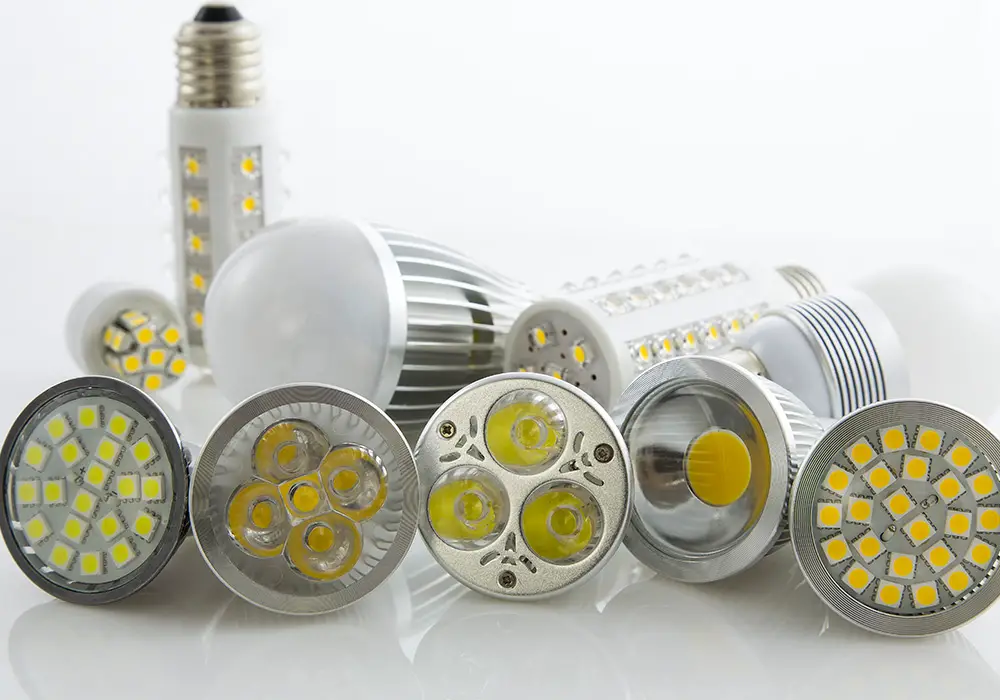
Benefits of Warm White Lighting
Choosing warm white lighting for your home or office offers several advantages. First and foremost, it creates a comfortable, welcoming atmosphere. The yellowish hue mimics the cosy glow of traditional incandescent bulbs, making spaces feel familiar and inviting. This type of lighting is especially suitable for living rooms and bedrooms, where relaxation is key.
Warm white light is also known to alleviate eye strain. With less blue light emitted compared to cool white or daylight bulbs, it is gentler on your eyes during extended periods of use. If you spend a lot of time reading or working on your computer, opting for warm white lighting can reduce visual discomfort and fatigue.
Additionally, warm white lighting can enhance the appearance of earth-toned and wooden furnishings. Richer, warmer colours in your home décor will appear more vibrant under this type of light, which can contribute to a harmonious and cohesive design scheme.
Finally, certain
Benefits of Soft White Lighting
When you want to create a cosy and inviting atmosphere in your home, soft white lighting is an excellent choice. In this section, we’ll outline a few key benefits of soft white lighting and explain why it may suit your needs.
1. Relaxing ambience: Soft white lighting provides a warm and comfortable feel, making it perfect for rooms where you want to unwind. It’s especially suited for living rooms, bedrooms, and dining areas, where a soothing atmosphere is desired.
2. Flattering appearance: The warm hues emitted by soft white lighting are known to enhance skin tones and create a more flattering appearance. This makes it ideal for spaces where you spend time with friends and family, such as living rooms or dining rooms.
3. Enhanced aesthetics: Soft white lighting can also contribute to the overall aesthetics of your home. By casting a warm glow, this type of light brings out the textures and colours of your furnishings, making your decor appear more cohesive and inviting.
4. Energy efficiency: Although soft white lighting may not be as energy-efficient as cool white or daylight bulbs, many modern LED options offer energy savings. By choosing energy-efficient soft white LED bulbs, you can still achieve the desired atmosphere while saving on energy costs.
5. Versatility: Soft white lighting can complement various interior design styles, from traditional to contemporary. This versatility means you won’t need to replace your lighting setup if you decide to change your decor in the future.
To sum up, soft white lighting offers a soothing ambience, enhances the appearance of your space, and can be energy-efficient with the right choice of bulbs.
Health Implications of Lighting
Influence on Sleep Patterns
Choosing the right lighting for your living spaces plays a crucial role in your sleep patterns. Warm white and soft white bulbs emit light with colour temperatures between 2700K and 3000K, creating a comfortable and relaxing environment. This helps your body prepare for sleep as it naturally associates warmer colours with evening time.
Exposure to cool light, such as light from screens, can inhibit the production of melatonin, a hormone important for regulating sleep. By using warm or soft white lighting, you can help stimulate melatonin production and maintain your natural sleep-wake cycle.
Impacts on Eye Health
Your eyes are sensitive to different types of light, so the choice between warm white and soft white lighting can also affect eye health. The lower colour temperatures of these lights can minimise glare and eyestrain, ensuring greater visual comfort.
Here are some tips for maintaining eye health with lighting choices:
- Use task-specific lighting: Choosing the right brightness levels and colour temperatures can help alleviate eyestrain. For tasks requiring high levels of concentration, consider using warmer light to avoid eye fatigue.
- Adjust light placement: Position your light sources to avoid direct exposure, reducing the risk of glare.
- Incorporate natural light: Whenever possible, utilise natural light sources in your living spaces to maintain a balance between artificial light and daylight.
By selecting warm white or soft white bulbs and incorporating these tips, you can positively impact your overall health and wellbeing.

